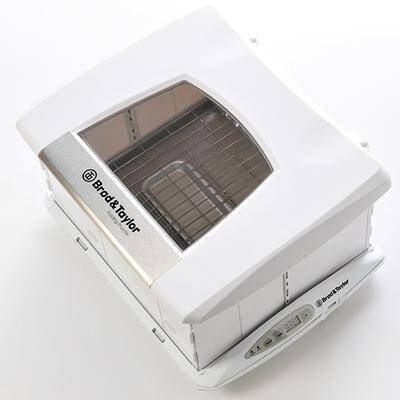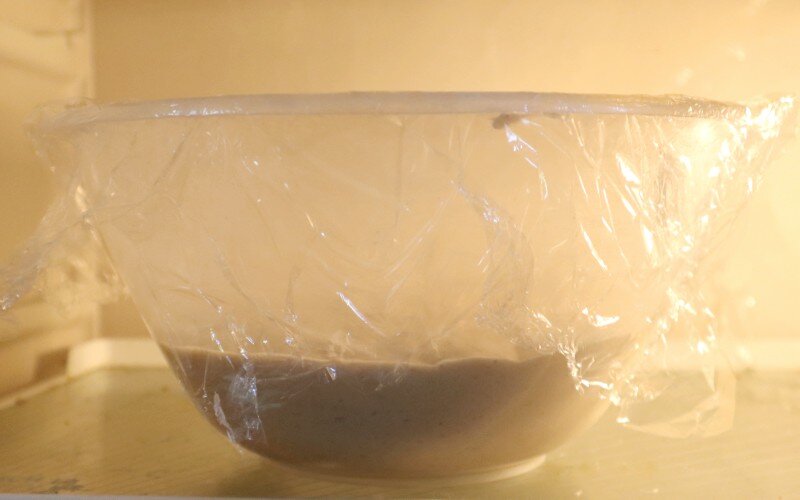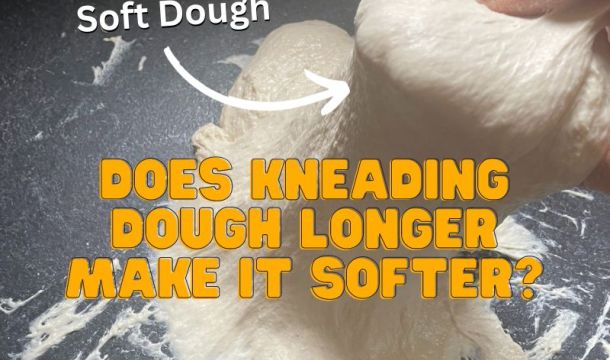
How Long Does It Take For Bread To Rise?

To make soft and fluffy bread, the dough must be proofed before baking. Proofing is the process of letting the yeast produce gas and allowing the gas to be captured in the gluten structure of the dough and make the dough rise.
Proofing bread dough takes a bit of time, but how long does it take for bread to rise? And does a no-rise bread exist? Well, let’s find out:
Bread dough typically takes around 1-4 hours to undergo its final rise, yet the short answer is there is no set time for bread dough to rise. The length of the rise is dependent on many features of the dough and the environment, with the most impact coming from the amount of yeast used and the temperature of the dough.
What happens when bread rises?
Bread dough usually undergoes two rises. The first, known as bulk fermentation, develops maturity and flavour in the dough. In the second or final rise, gas is retained and undisturbed in the gluten structure, and the dough rises until it is ready for the oven.
Check the proofing bread page for more information on proofing. Otherwise, let’s continue finding out how long it takes for bread to rise…
How to speed up my dough rising?
The CO2 gas that inflates the gluten matrix is provided by the yeast. The yeast supplies enzymes which break down the starch in the flour into simpler sugars. Yeast then consumes the sugars in the bread fermentation process to produce CO2 (among other products).
Yeast operates best when it’s warm. Therefore, warming the dough or the dough’s proofing temperature reduces the rising time.
One of the hardest things to manage in bread baking is temperature. Room temperatures fluctuate with the weather and seasonality. They also rise when the oven is on, filling the kitchen with warm air. The best solution to create the perfect proofing environment is to get yourself a home-proofing box like this one from Brod & Taylor:

With one, you can fine-tune the temperature of your proofing environment, making inconsistent rise times a thing of the past! Click to see on Amazon or here to get the best price from the Brod & Taylor.
Other factors that speed up the rise, detailed in the proofing bread article, include:
- Humidity
- Dough hydration
- Minerals available in the flour and water
- Mixing time
- Dough maturity
Bread proofing timetable showing the impact on the amount of yeast and temperature changes
To give you an idea of how long it takes bread to rise in certain recipes, here is a simple table. As just mentioned, more elements impact the speed of the rise than this. It’s better to learn how to tell when dough is done proofing rather than relying solely on timing vs temperature.
I’ve based the timings in this table on a bread recipe with a 1-hour bulk fermentation before shaping and a Desired Dough Temperature of 26C (79F). The desired dough temperature is the dough’s temperature when it has finished mixing.

*The yellow section is the area best suited for bread bakers except when retarding the dough in the fridge.
Tip: Active yeast quantities should be halved. For example, 2% fresh yeast is the equivalent of 1% Active dried yeast. See my yeast conversion table for more.
How does the amount of yeast affect how high bread rises?
If you are in a hurry, you can add more yeast to speed up the rise. But this is not the best solution in many circumstances. A slowly risen bread dough benefits from more fermentation activity and gluten development. The dough maturity this provides will often enable the bread to rise even higher!
How do you know when bread is done proofing?
The most recognised way to tell when to end proofing is the poke test. This involves poking your finger into the dough and measuring how quickly it springs back when you remove your finger. The optimum time is around 3 seconds for it to spring back. Less than this, and the dough is not done proofing yet.
You can also become familiar with the height that the bread rises in your baking vessel (loaf pan/banneton). Once you repeat the same dough weights in your tin you’ll be able to tell how when the bread is risen just by looking at it.
Can I use proof dough in the fridge?

Placing bread dough in the refrigerator for its final rise is a popular choice for many bakers. The cool temperatures of most home fridges halt the action of the yeast and the enzymes that would supply it with sugars. Because of this, there is very little rising that occurs in the fridge. The process is otherwise known as retarding the dough.
When retarding, even though there is very little gas produced, starch continues to be broken down into sugars, and organic acids populate. The resulting bread is often sweeter and more flavourful than otherwise.
This and the ability to prepare bread to bake the following day make proofing dough in the fridge a fantastic option for artisan and sourdough bread bakers. It’s also used for enriched doughs such as Brioche during the first rise as the cooler dough is easier to shape.
There is a limit to how long you can store bread dough in the fridge! Check the linked article to learn more.
If you proof dough in the fridge, allow it time to rise at warmer temperatures, so the yeast is warm enough to be active.
For large loaves, it’s best to proof till ½ -¾ proofed before placing them in the fridge.
For small rolls or baguettes retard right after shaping and proof them on the counter or a proofer until ready to bake.
Is no-rise bread a thing?
Loaves need time to rise to populate the gas in the dough. There are bread types, such as Campaillou, that mature during bulk fermentation and are then divided and baked right away -with no final rise. Flatbreads such as pitta bread or tortillas can be made without proofing but benefit from some time to rest before baking.
How long does bread take to cool?
Once bread dough has risen and been baked, how long does it take to let bread cool down?
Cooling bread is about letting moisture escape the bread in a slow, controlled manner. Cutting warm bread will force the moisture to escape rapidly and the temperature of the bread to suddenly drop. This means the softness, shelf-life and overall texture of the bread are weakened. Aim to wait for 2-3 hours for your bread to cool. The centre of your bread should drop below 35C (95F).
Why would you want to make bread quickly?
Many bakeries make their bread quickly to lower production costs (labour & space). Fast bread production methods enable bakeries to sell their products at a lower price and remain profitable bakery business. The trade-off is that the dough will need enhancing with dough improvers to be produced this quickly, which replace the flavour of fermentation and mature wheat.
How long does it take for bread to rise – frequently asked questions
If you’ve enjoyed this article and wish to treat me to a coffee, you can by following the link below – Thanks x

Hi, I’m Gareth Busby, a baking coach, senior baker and bread-baking fanatic! My aim is to use science, techniques and 15 years of baking experience to make you a better baker.
Table of Contents
- What happens when bread rises?
- How to speed up my dough rising?
- Bread proofing timetable showing the impact on the amount of yeast and temperature changes
- How does the amount of yeast affect how high bread rises?
- How do you know when bread is done proofing?
- Can I use proof dough in the fridge?
- Is no-rise bread a thing?
- How long does bread take to cool?
- Why would you want to make bread quickly?
- How long does it take for bread to rise – frequently asked questions
Related Recipes
Related Articles
Latest Articles
Baking Categories
Disclaimer
Address
53 Greystone Avenue
Worthing
West Sussex
BN13 1LR
UK








Leave a Reply